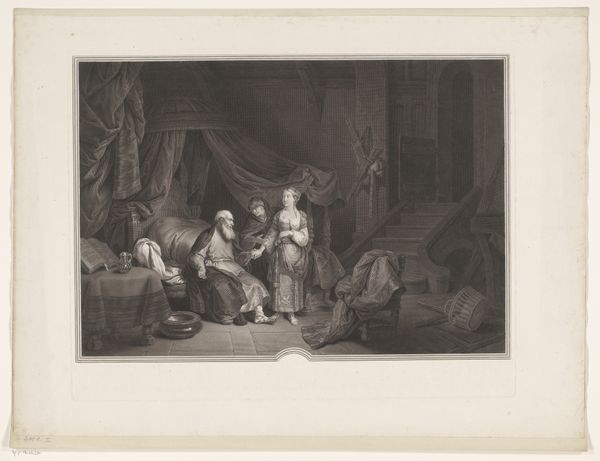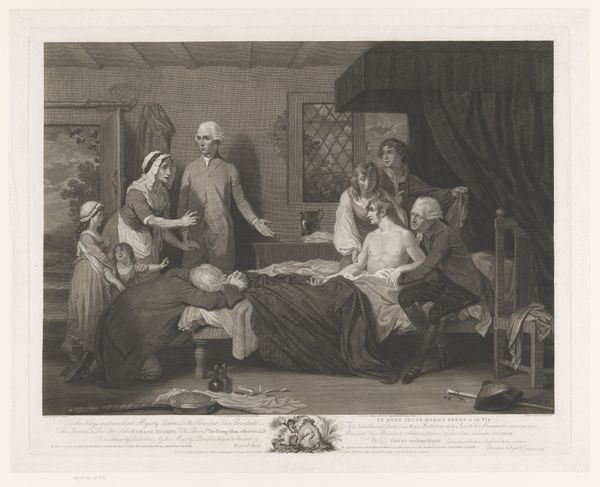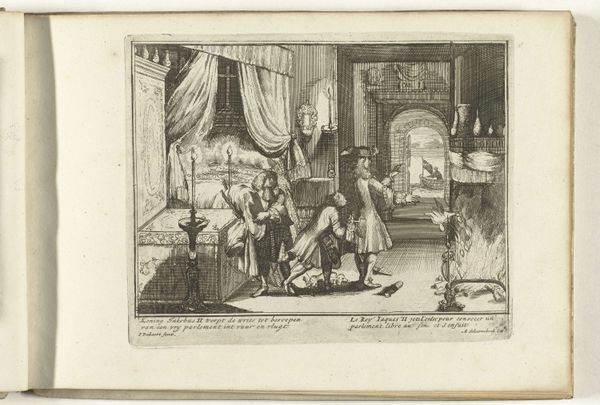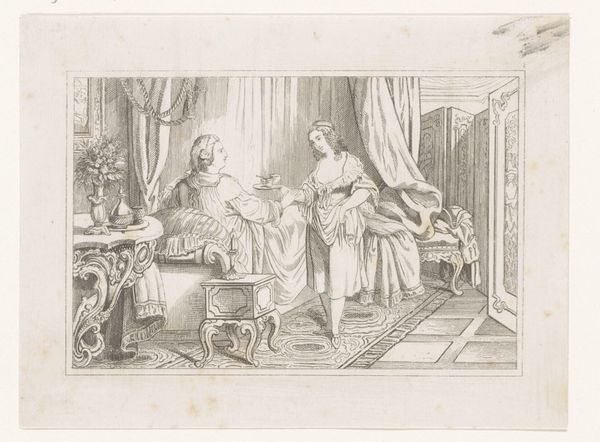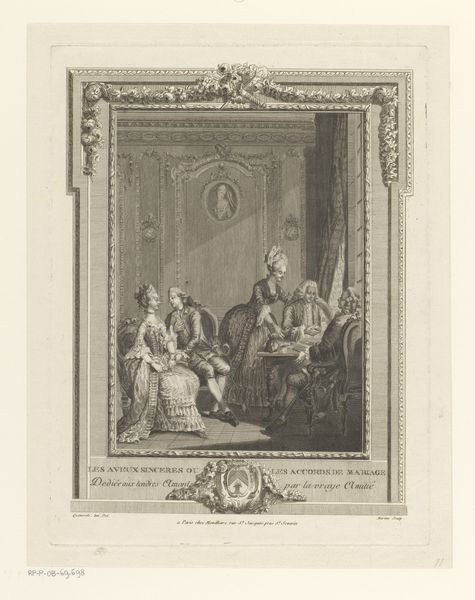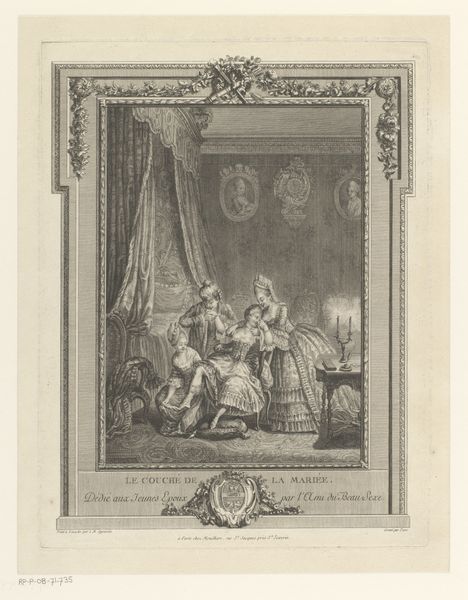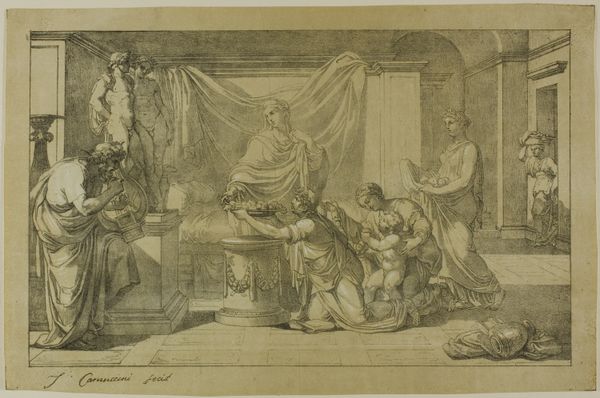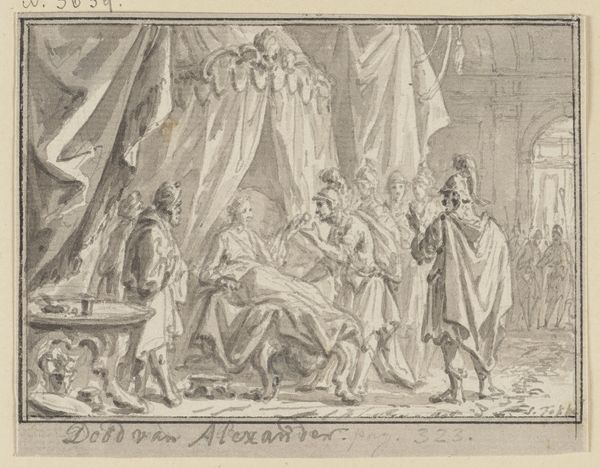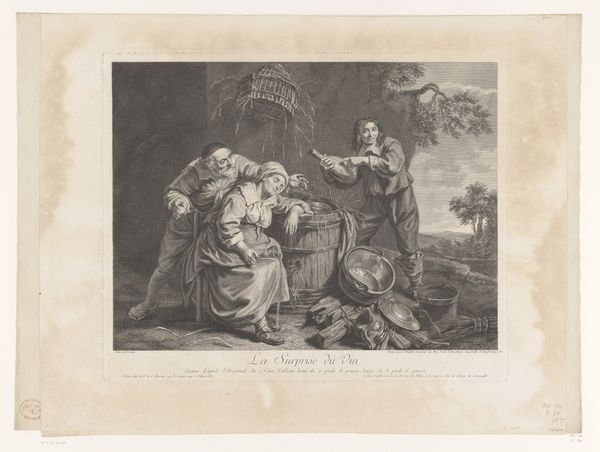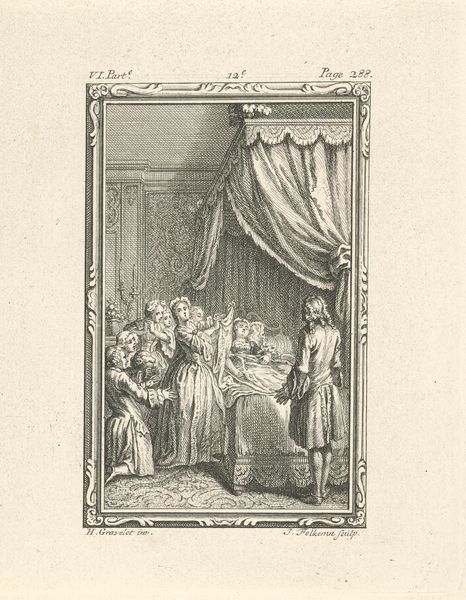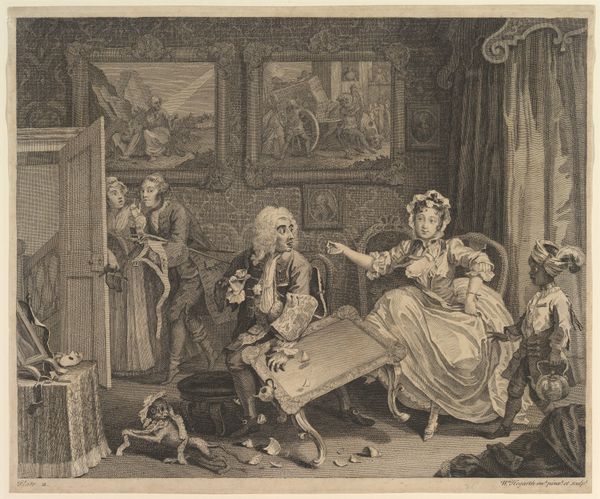
#
pencil drawn
#
aged paper
#
toned paper
#
light pencil work
#
wedding photograph
#
photo restoration
#
pencil sketch
#
old engraving style
#
pencil drawing
#
pencil work
Dimensions: height 214 mm, width 274 mm
Copyright: Rijks Museum: Open Domain
This print was made by Charles Emmanuel Patas, sometime between the mid-18th and early 19th century, using engraving. The fine lines we see here come from a painstaking process, where the artist carves an image into a metal plate, applies ink, and then presses it onto paper. The image is all about production, actually: we see a man walking in on a compromising situation, possibly in a working-class household. Just look at the sacks lying on the ground. The contrast between the illicit couple and the setting really tells a story. Patas used the tools and skilled traditions of engraving to depict a very human and morally complex situation. What's fascinating is how a medium associated with reproducing images for a wide audience could also be used to explore intimate and even transgressive subject matter. This print reminds us that the value of an artwork isn't just in the image it presents, but in the craft and the context of its creation. It challenges our ideas about what is high art and what is craft.
Comments
No comments
Be the first to comment and join the conversation on the ultimate creative platform.

